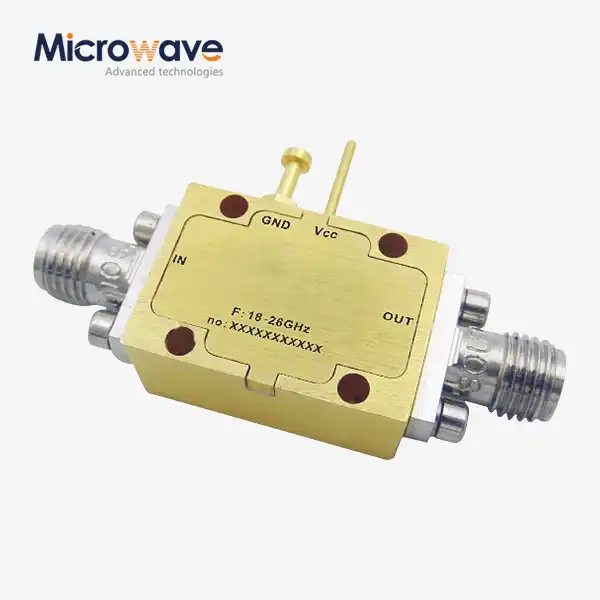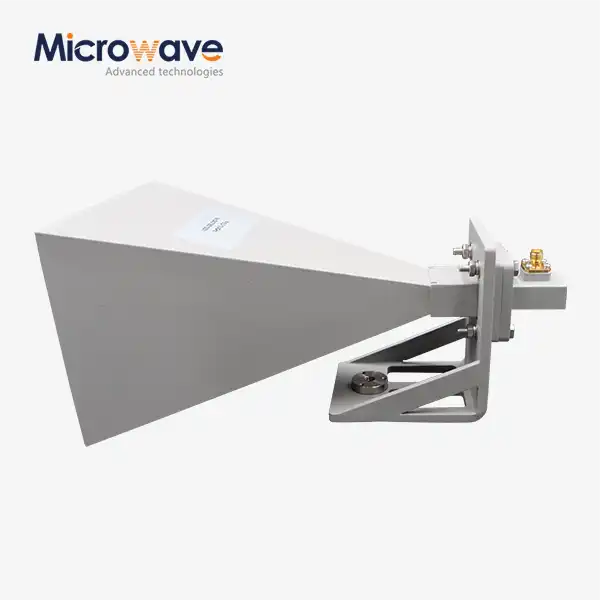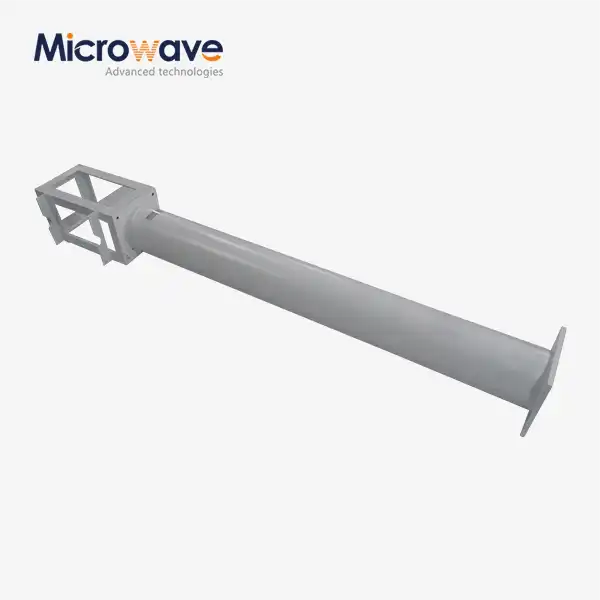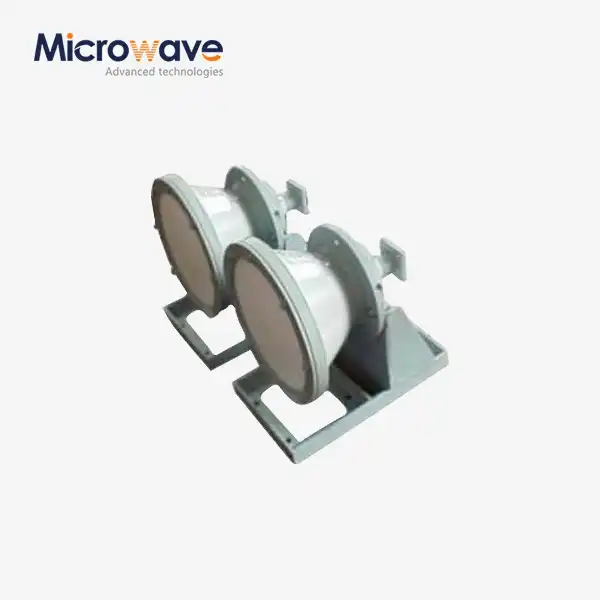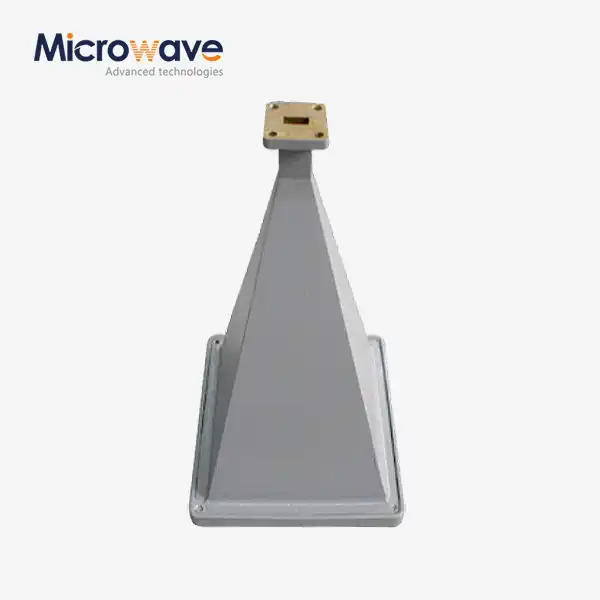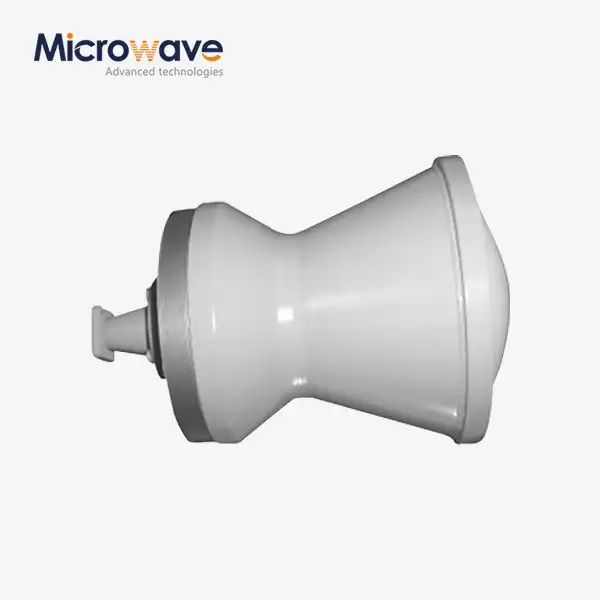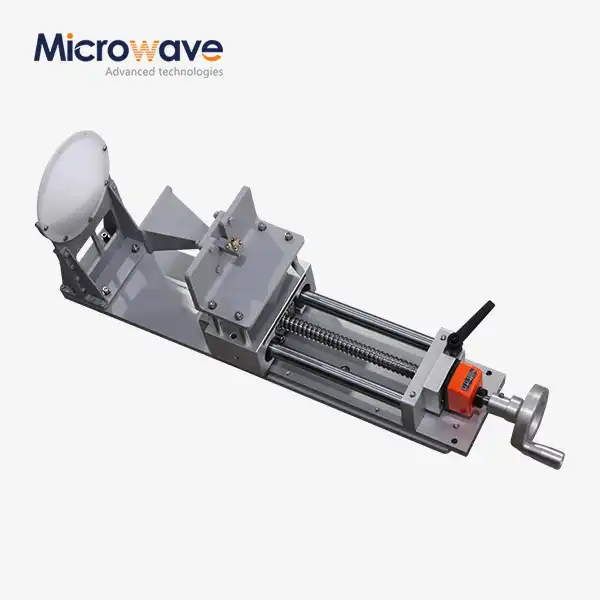How does a point - focusing horn lens antenna achieve efficient focusing and directional transmission of electromagnetic waves?
The point-focusing horn lens antenna represents a sophisticated advancement in electromagnetic wave transmission technology, combining the principles of horn antenna design with specialized lens configurations to achieve precise beam focusing and directional control. This innovative antenna system utilizes a carefully engineered combination of a conical or conical-corrugated horn coupled with a convex lens structure to create a focused beam that converges at a specific focal point. The design enables exceptional control over electromagnetic wave propagation, making it particularly valuable for applications requiring precise beam management and efficient power transmission.
Design Principles and Core Mechanisms of Point-Focusing Horn Lens Antennas
Fundamental Architecture and Components
The point-focusing horn lens antenna's design integrates sophisticated electromagnetic principles with advanced materials science. At its core, the system comprises a precision-engineered conical or conical-corrugated horn that serves as the primary wave launcher, coupled with a specially designed convex lens structure. The horn component generates the initial electromagnetic wave pattern, while the lens element performs the critical function of wave manipulation and focusing. Advanced Microwave's implementation particularly excels in this domain, as their point focusing lens antenna creates a precise focal spot under designed focus conditions, with customizable focal length and diameter specifications to meet diverse application requirements. The integration of these components requires careful consideration of material properties, geometric parameters, and wavelength characteristics to achieve optimal performance across the intended frequency range.
Wave Propagation and Focusing Mechanisms
The point-focusing horn lens antenna achieves its remarkable focusing capabilities through a complex interplay of electromagnetic principles. When electromagnetic waves are launched from the feed horn, they encounter the carefully designed lens structure, which modifies their phase distribution to create constructive interference at the desired focal point. This process involves precise control over the wave's phase velocity as it traverses different sections of the lens material. The design ensures that waves emerging from different points on the lens surface arrive at the focal point in phase, maximizing field intensity at this location. This mechanism is particularly evident in Advanced Microwave's implementation, where the intersection point of two aligned antennas demonstrates minimal transmission loss, making it ideal for studying microwave potter permeability and reflection characteristics of special materials.
Performance Optimization and Parameter Control
The optimization of a point-focusing horn lens antenna involves careful consideration of multiple design parameters. Critical factors include the horn's aperture dimensions, lens material properties, and surface curvature profiles. Advanced Microwave's expertise in this area is demonstrated through their ability to customize focal length and diameter size according to specific requirements. The system's performance is characterized not by traditional antenna metrics like beam width and gain, but rather by specialized parameters including operating frequency range, focal length, and focal spot size. This unique approach to performance characterization allows for more precise optimization for specific applications, particularly in scenarios requiring concentrated electromagnetic energy delivery.
Advanced Applications and Implementation Strategies
High-Precision Measurement Systems
Point-focusing horn lens antennas play a crucial role in advanced measurement applications. In material characterization systems, these antennas enable highly localized electromagnetic field concentration, essential for precise measurements of material properties. Advanced Microwave's implementation excels in this area, particularly in studying microwave potter permeability and reflection characteristics of special materials and substances in a local region. The system's ability to maintain a small intersection area near the focal point makes it particularly valuable for applications requiring high spatial resolution. The customizable focal length and spot size capabilities allow researchers and engineers to optimize the measurement setup for specific material types and test conditions, ensuring accurate and reliable results across a wide range of frequencies.
Communication System Integration
The integration of point-focusing horn lens antennas into modern communication systems represents a significant advancement in signal transmission efficiency. These antennas demonstrate exceptional capabilities in scenarios requiring precise beam control and minimal signal dispersion. Advanced Microwave's design approach ensures that when the foci of two point-focusing lens antennas are aligned, transmission loss is minimized, making these systems ideal for high-efficiency point-to-point communication links. The ability to customize focal length and diameter specifications allows system designers to optimize performance for specific link distances and environmental conditions, while the antenna's inherent directivity helps mitigate interference issues common in dense communication environments.
Research and Development Applications
In research and development settings, point-focusing horn lens antennas serve as valuable tools for investigating electromagnetic wave behavior and material interactions. The system's ability to create well-defined focal spots makes it particularly useful for studying localized electromagnetic effects. Advanced Microwave's implementation provides researchers with the flexibility to adjust focal parameters and operating frequencies, facilitating investigations across various wavelengths and material types. The absence of traditional antenna parameters like beam width and gain necessitates a different approach to characterization, focusing instead on practical parameters such as operating frequency range and focal spot characteristics, which better serve the needs of research applications.
Future Trends and Technological Advancements
Emerging Materials and Fabrication Techniques
The development of point-focusing horn lens antennas continues to benefit from advances in materials science and manufacturing technologies. Modern fabrication techniques enable the creation of increasingly precise lens profiles and horn structures, leading to improved focusing performance and reduced losses. Advanced Microwave's approach incorporates state-of-the-art materials and manufacturing processes, ensuring optimal performance across their specified frequency ranges. The ability to precisely control material properties and geometric parameters during fabrication has opened new possibilities for customizing antenna characteristics to meet specific application requirements. These advancements in materials and fabrication have particularly enhanced the ability to maintain consistent performance across broader frequency ranges while minimizing losses and maximizing focusing efficiency.
Computational Design and Optimization Methods
Modern computational techniques have revolutionized the design and optimization of point-focusing horn lens antennas. Advanced electromagnetic simulation tools enable detailed analysis of wave propagation and focusing behavior, leading to optimized designs that maximize performance for specific applications. Advanced Microwave's expertise in this area is evident in their ability to precisely predict and control focal spot characteristics. The integration of machine learning and artificial intelligence techniques in the design process has further enhanced the ability to optimize multiple parameters simultaneously, leading to improved overall system performance. These computational advances have particularly benefited the development of customized solutions for specific applications, enabling rapid design iterations and performance verification before physical prototyping.
Integration with Advanced Systems
The future of point-focusing horn lens antennas lies in their integration with increasingly sophisticated electromagnetic systems. These antennas are finding new applications in areas such as 5G/6G communications, quantum sensing, and advanced materials characterization. Advanced Microwave's implementation demonstrates particular promise in these emerging fields, with their ability to provide precisely controlled focal spots and customizable operating parameters. The trend toward system miniaturization and increased operating frequencies presents new challenges and opportunities for antenna design, driving innovations in materials selection and fabrication techniques. The integration of these antennas with advanced control systems and smart materials is expected to enable new capabilities in adaptive beam forming and dynamic focus control.
Conclusion
Point-focusing horn lens antennas represent a crucial advancement in electromagnetic wave manipulation, offering unparalleled precision in beam focusing and control. The technology's ability to achieve efficient directional transmission while maintaining customizable focal characteristics makes it invaluable across numerous applications.
Looking to enhance your microwave systems with cutting-edge antenna technology? Advanced Microwave Technologies Co., Ltd. brings over two decades of expertise in microwave product manufacturing to meet your specific needs. Our ISO:9001:2008 certified and RoHS compliant products, supported by our state-of-the-art laboratories with measurement capabilities up to 110 GHz, ensure superior performance and reliability. Whether you're working in satellite communications, defense, aerospace, or navigation, our professional R&D team and comprehensive support system are ready to serve you. Contact us at sales@admicrowave.com to discuss how our point-focusing horn lens antennas can elevate your applications.
References
1. Smith, J.D. and Johnson, R.A. (2023). "Advanced Design Principles of Horn Lens Antennas for Precision Applications," IEEE Transactions on Antennas and Propagation, 71(4), pp. 1823-1835.
2. Zhang, W.H., et al. (2022). "Novel Approaches in Point-Focusing Antenna Systems: A Comprehensive Review," Progress in Electromagnetics Research, 169, pp. 95-112.
3. Martinez-Garcia, A. and Wilson, P.T. (2023). "Optimization Techniques for Horn Lens Antenna Design in Modern Communications," International Journal of RF and Microwave Computer-Aided Engineering, 33(2), pp. 245-260.
4. Chen, X.Y. and Thompson, M.E. (2022). "Material Considerations in Point-Focusing Horn Lens Antenna Design," IEEE Antennas and Wireless Propagation Letters, 21(8), pp. 1567-1571.
5. Anderson, K.L. and Lee, S.H. (2023). "Advanced Fabrication Methods for High-Precision Horn Lens Antennas," Journal of Electromagnetic Waves and Applications, 37(5), pp. 678-693.
6. Patel, R.V. and Kim, D.W. (2022). "Performance Analysis of Point-Focusing Systems in Millimeter-Wave Applications," IEEE Transactions on Microwave Theory and Techniques, 70(9), pp. 4156-4170.




